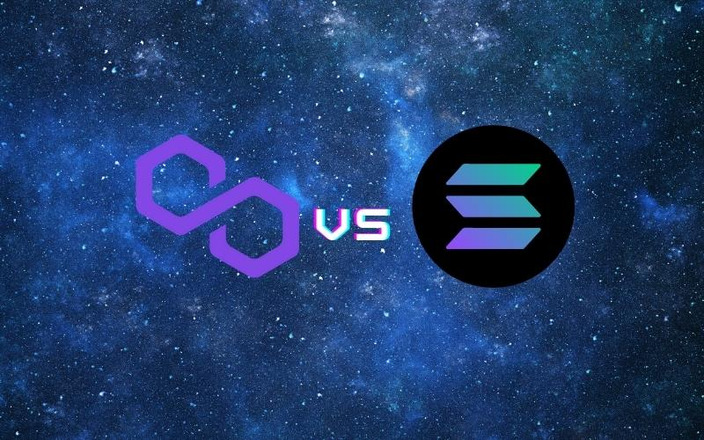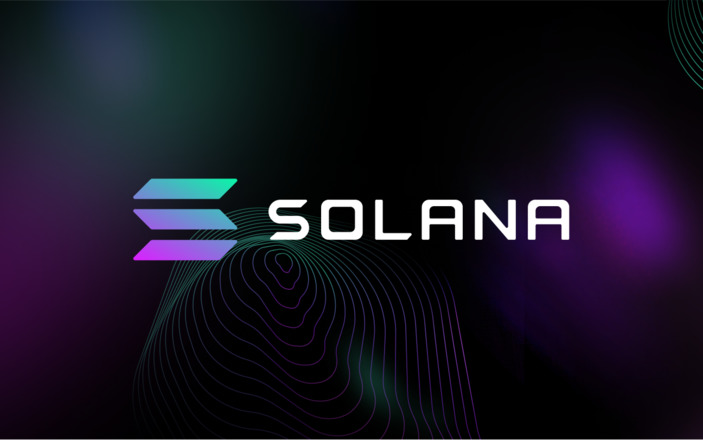
There are several different types of cryptocurrency out there, and it can be confusing to decide which one is right for you. In this article, we’ll compare the Polygon vs. Solana tokens, two of the most popular options available for crypto-enthusiasts. We’ll look at their similarities and differences and how each might benefit your portfolio.
Ultimately, it’s essential to do your research before investing in any new cryptocurrency so that you can make an informed decision about which one is best for you.
Table of Contents,
What is Polygon?

Formerly known as MATIC Network, Polygon is a platform for creating interconnected blockchain networks.
It aims to address some of Ethereum’s significant limitations, including its bandwidth, poor user interface, and lack of community management, using a new side chain solution.
Instead of being a simple solution to scale, which uses Plasma technology to process transactions off-chain before completing them in the Ethereum main chain, Polygon is designed as an entire platform to run interoperable blockchains.
With Polygon, developers can run specified blockchain networks with attributes adapted to their needs. In addition, they can be further personalized with an increasing set of modules, enabling developers to build sovereign blockchains with more peculiar functionality.
Polygon is designed to create a future in which various blockchains no longer function as closed repositories and proprietary communities but instead as networks that fit into a broader interconnected landscape.
Its long-term plan is to develop an open, borderless world where users can easily interact with decentralized services and products without a need to go through intermediaries. It aims to create a hub to which different blockchains can easily connect while overcoming some of their limitations, such as high fees, poor scalability, and limited security.
What is Solana?

Solana is a unique cryptocurrency created in 2017. It operates on a Proof of History (PoH) consensus blockchain. This mechanism is based on adding timestamps to blockchain blocks. This makes it possible to determine precisely when a particular event or transaction occurred. Accordingly, such a principle of operation allows for significantly reduced gas charges for the network users.
SOL is an internal cryptocurrency of the blockchain of the same name, in which confirmation of the network takes place through the participation of other users. However, this coin does not need to be mined, as validation is automatic. In addition, all holders of the cryptocurrency are rewarded for stacking. This makes the coin environmentally friendly, as it does not require significant energy consumption and mining equipment to mine it.
The Solana network is characterized by high throughput. The SOL blockchain can conduct up to 710 thousand transactions per second (by comparison, VISA supports only 65 thousand transactions per second). The commissions in the network are minimal, and the cryptocurrency is fully decentralized. Now, the commission for SOL transactions is about $1 for every 100 thousand transactions.
The development strategy of Solana is to further increase the speed of transfers without increasing commissions. It is the Proof-of-History algorithm that allows the project to support such amount of transactions. The importance of this technology is that most networks spend time and resources on the synchronization of transaction times between network nodes.
This is the main feature of this blockchain.
Polygon Vs. Solana: Which one to Choose
Before making a choice in favor of one or another blockchain (Solana vs. Polygon), let’s compare their technical characteristics:
| Solana | Polygon | |
| Consensus algorithm | Proof-of-History | Proof-of-Stake |
| Transaction processing speed | 50,000 transactions / second, with the possibility of raising it to 700,000 | 2,000 transactions / second |
| In-network fee | 0,000005 SOL | ~ 40-60 POL |
| Emission | 1 billion | 10 billion |
Consensus algorithm
As you can see in the table, Polygon uses the Proof-of-Stake consensus mechanism to secure the network and create new MATIC tokens. Therefore, users can receive prizes in the form of MATIC tokens for participating in the network.
However, Solana is based on the PoH (Proof-of-History) consensus, which has higher throughput and a more economical operating model. At the heart of this consensus, the model is an internal precision clock that measures out sections of time to confirm transactions. This approach allows for several times the throughput of the blockchain if required.
Accordingly, the Solana network has more advantages than Polygon. It can be a decisive factor when choosing a cryptocurrency of one or the other blockchain.
Transaction processing speed
Transaction speed in the blockchain is essential when selecting a particular network or cryptocurrency. Therefore, this parameter is worth analyzing in the first place.
Comparing the speed of Solana vs. MATIC transactions, we are talking about some superiority of SOL. After all, this cryptocurrency has a hybrid consensus, increasing TPS up to 50,000. At the same time, in the Polygon network, the TPS indicator is only about 2,000, with the possibility of increasing up to 7,000.
Scalability
One of the main features of Solana is scalability, which far surpasses the capabilities of the Polygon blockchain. The reason SOL excels in scalability is its unique PoH consensus. Because of this, the network can handle a virtually unlimited number of concurrently connected users with minimal transaction costs and high throughput.
Polygon is more limited in scalability because it runs on the Ethereum blockchain. Nevertheless, the transition to Ethereum 2.0 with a completely new consensus could bring Polygon closer to Solana.
Polygon, on the other hand, provides scalability through side chain and multichain features, with support for Plasma.
Polygon Vs. Solana – Which Token is the Best Investment?
Solana is superior to Polygon in many technical respects. But can SOL be a better alternative for investment?
It’s hard to predict which cryptocurrency will be at the top in the future. Nevertheless, Solana is almost six times cheaper than its high, and Polygon (MATIC) is trading three times cheaper than its high. SOL probably has a better chance of pulling ahead as the bull rally begins.
However, both cryptocurrencies are considered by experts and crypto-enthusiasts to be profitable investments during the current bear market.
Conclusion
When it comes to the Polygon (MATIC) vs. Solana, there are a few things to consider. First and foremost, both tokens offer users a fair amount of flexibility regarding how they want to use them. Second, both tokens have their own merits and weaknesses, which you should consider before making your decision.
Ultimately, deciding which token to choose comes down to personal preference and what you believe will be best for your business.



